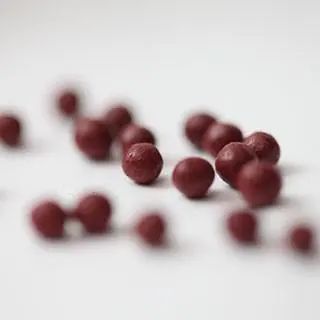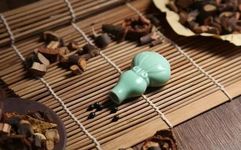Traditional Chinese Medicine (TCM) practitioners aim to disseminate health knowledge.
Click below to follow for free ↓↓↓
There are many TCM patent medicines that activate blood circulation and resolve stasis, such as Fangpian Xueshuantong (Compound Xueshuantong), Naoshuantong (Cerebral Thrombus Relief), Xuesaitong (Blood Stasis Relief), Naoluotong (Cerebral Network Relief), Tongxinluo (Heart Channel Relief), and Huoxuetongmai (Blood Activation and Channel Opening). These medicines may sound similar, but their effects and indications differ significantly, so it is crucial not to take the wrong one.

Although they are all TCM patent medicines for activating blood circulation and resolving stasis, their effects vary and have specific focuses. Below, Yixian Yaoshi introduces ten TCM patent medicines for activating blood circulation and resolving stasis for your learning and reference.

1. Guangxin Suhe Wan (Coronary Heart Suhe Pill) is a Qi-regulating and harmonizing medicine. Suhexiang (Liquidambars) is warm and aromatic, while Bingpian (Borneol) is cool and aromatic, both serving as the monarch drugs. Ruxiang (Frankincense) and Tanxiang (Sandalwood) are warm and disperse, warming the meridians and activating blood circulation, serving as minister drugs. Tumuxiang (Agarwood) strengthens the spleen and stomach, regulates Qi, resolves depression, and alleviates pain, serving as an assistant drug. Together, these herbs harmonize Qi, open the chest, warm the meridians, and relieve pain. It is used for chest obstruction due to cold congealing in the blood vessels, angina pectoris, presenting as chest pain radiating to the back, chest tightness, shortness of breath, fatigue, and cold limbs. Guangxin Suhe Wan warms and disperses cold, and is not suitable for those with cold-congealing heart vessels or heat closure. It is contraindicated for those with Yin deficiency and excess fire, as the composition of Guangxin Suhe Wan consists mainly of warm and aromatic herbs. The primary adverse reaction is gastrointestinal discomfort; caution is advised for those with gastrointestinal diseases or spleen and stomach deficiency.

2. Fangpian Xueshuantong Jiao Nang (Compound Xueshuantong Capsules) consists of four classic herbs: Sanqi (Notoginseng), Huangqi (Astragalus), Danshen (Salvia miltiorrhiza), and Xuan Shen (Scrophularia). It is a blood-regulating agent with the effects of activating blood circulation, resolving stasis, tonifying Qi, and nourishing Yin. It is indicated for retinal vein occlusion with blood stasis and Qi-Yin deficiency, presenting as decreased vision or visual abnormalities, retinal hemorrhage, and for stable exertional angina pectoris with blood stasis and Qi-Yin deficiency. In modern medicine, it is often used to treat hyphema, macular hemorrhage, retinal vein occlusion, carotid atherosclerosis, prevent recurrence of cerebral infarction, treat dry eye syndrome, hypertension, and angina pectoris.3. Naoshuantong Jiao Nang (Cerebral Thrombus Relief Capsules) is composed of Puhuang (Typha), Chishao (Red Peony), Yujin (Curcuma), Tianma (Gastrodia), and Loulou (Rehmannia). It has the effects of activating blood circulation, unblocking collaterals, dispelling wind, and resolving phlegm. It is used for ischemic stroke caused by wind-phlegm and blood stasis obstruction in the meridians during the acute and recovery phases. Symptoms include hemiplegia, facial droop, speech difficulties or aphasia, unilateral numbness, shortness of breath, fatigue, dizziness, and tinnitus, particularly in cases of cerebral infarction with the aforementioned symptoms. Thus, Naoshuantong Jiao Nang is primarily suitable for stroke and cerebral infarction.4. Xuesaitong Jiao Nang (Blood Stasis Relief Capsules) contains total saponins of Sanqi. It has the effects of activating blood circulation, resolving stasis, and unblocking meridians. It can inhibit platelet aggregation and increase cerebral blood flow. It is used for cerebral blood stasis, hemiplegia due to stroke, heart vessel obstruction, and chest pain; it is also indicated for sequelae of cerebrovascular diseases and angina pectoris due to coronary heart disease. It is suitable for blood stasis syndrome without obvious cold or heat symptoms.5. Tongxinluo Jiao Nang (Heart Channel Relief Capsules) is a blood-regulating agent composed of Ren Shen (Ginseng), Huzhang (Leech), Quanscorpius (Scorpion), Chishao, Chanting Cicada, Tumuxiang, Wugong, Tanxiang, Bingpian (Borneol), Suanzao Ren (Sour Jujube Seed), and others. In this formula, Ren Shen tonifies heart Qi, serving as the monarch drug. Huzhang and Tumuxiang activate blood circulation and resolve stasis, unblocking the meridians; Quanscorpius, Wugong, and Chanting Cicada are insect drugs that enhance the movement of other herbs through the meridians and relieve spasms, serving as minister drugs. Chishao activates blood circulation and disperses blood stasis, alleviating pain; Bingpian is aromatic and disperses, serving as an assistant drug. Together, these herbs enhance Qi, activate blood circulation, unblock meridians, and relieve pain. It is indicated for angina pectoris due to heart Qi deficiency and blood stasis obstruction, presenting as chest tightness, angina, palpitations, spontaneous sweating, shortness of breath, and fatigue, with a purple or dark tongue or stasis spots. It is also used for stroke with Qi deficiency and blood stasis obstruction, presenting as hemiplegia or unilateral numbness, facial droop, and speech difficulties. Caution is advised for bleeding disorders, pregnant women, and women during menstruation, as well as those with Yin deficiency and excess fire.6. Huoxuetongmai Pian (Blood Activation and Channel Opening Tablets) consists of Jixueteng (Spatholobus), Sanqi, Danshen, Chishao, Honghua (Safflower), Tanxiang, Yujin, Sanqi, Chuanxiong (Ligusticum), Chenpi (Dried Tangerine Peel), Muxiang (Aucklandia), Shichangpu (Acori), Gouqizi (Goji Berries), Jiu Huangjing (Fermented Polygonatum), and Ren Shen. In this formula, Sanqi, Huangjing, Mai Dong, Chenpi, Jixueteng, and Danshen activate blood circulation and regulate Qi to relieve pain; Ren Shen, Chishao, Ge Gen (Kudzu), and Yujin nourish and activate blood circulation; Honghua, Tanxiang, Muxiang, Chuanxiong, Taoren (Peach Kernel), and Bingpian regulate Qi, activate blood circulation, and relieve pain. Together, these herbs activate Qi, invigorate blood circulation, unblock meridians, and relieve pain. It is indicated for angina pectoris due to Qi stagnation and blood stasis.7. Qishen Yiqi Wan (Qi and Blood Tonifying Pill) consists of Huangqi, Danshen, Sanqi, and Tanxiang. It tonifies Qi, unblocks meridians, and activates blood circulation to relieve pain. It is indicated for chest obstruction due to Qi deficiency and blood stasis, presenting as chest tightness, chest pain, shortness of breath, palpitations, pale complexion, spontaneous sweating, a fat tongue with tooth marks, a dark or purple tongue with stasis spots, and a deep or wiry pulse, suitable for angina pectoris due to coronary heart disease with the aforementioned symptoms.8. Yangxin Shi Pian (Heart Nourishing Tablets) consists of Huangqi, Dangshen (Codonopsis), Danshen, Ge Gen, Yinyanghuo (Epimedium), Shanzha (Hawthorn), Dihuang (Rehmannia), Danggui (Angelica), Huanglian (Coptis), Cu Yanhusuo (Vinegar-processed Corydalis), Lingzhi (Reishi), Ren Shen, and Zhi Gan Cao (Honey-fried Licorice). Among these, Huangqi, Yinyanghuo, Dangshen, Lingzhi, Ren Shen, and Zhi Gan Cao tonify Qi and stabilize the foundation, connecting the heart and kidneys; Danshen, Danggui, Shanzha, and Cu Yanhusuo activate blood circulation, resolve stasis, and relieve pain; Ge Gen, Dihuang, and Huanglian nourish Yin, clear heat, calm the spirit, and nourish the heart. Together, these herbs support the righteous Qi, tonify the foundation, invigorate blood circulation, and relieve pain. It is indicated for coronary heart disease with Qi deficiency and blood stasis, angina pectoris, myocardial infarction, and combined with hyperlipidemia and hyperglycemia, presenting with the aforementioned symptoms. Yangxin Shi Pian is characterized by its ability to strengthen Qi, gently activate blood circulation, and simultaneously nourish the heart and calm the spirit, supporting the foundation.9. Xiaoshuantong Luo Pian (Stasis Dissolving and Channel Unblocking Tablets) consists of Chuanxiong, Danshen, Huangqi, Zexie (Alisma), Sanqi, Huaihua (Sophora Flower), Guizhi (Cinnamon Twig), Yujin, Muxiang, Bingpian, and Shanzha. It activates blood circulation, resolves stasis, warms the meridians, and unblocks collaterals. It is indicated for stroke caused by blood stasis obstruction, presenting as dull expression, slurred speech, cold hands and feet, and limb pain; it is also suitable for ischemic stroke and hyperlipidemia with the aforementioned symptoms. Xiaoshuantong Luo Pian may cause adverse reactions such as nausea, vomiting, abdominal pain, diarrhea, dizziness, headache, rash, and itching. It is contraindicated for pregnant women and those with hemorrhagic stroke. Caution is advised for those with prominent Yin deficiency and internal heat or phlegm-heat symptoms.10. Liqi Huoxue Diyan (Qi Regulation and Blood Activation Pills) consists of Da Guo Mu Jiangzi (Giant Fruit Wood Ginger), Xiaobai (Garlic), Chuanxiong, and Aipian (Mugwort). In this formula, Da Guo Mu Jiangzi activates Yang and invigorates blood circulation, serving as the monarch drug; Xiaobai and Chuanxiong activate Yang, disperse masses, and regulate Qi, serving as minister drugs; Aipian opens the orifices, awakens the spirit, clears heat, and relieves pain, serving as an assistant drug. Overall, this formula harmonizes the cold and heat, effectively activating Yang and regulating Qi, while also possessing the dual effects of aromatic warming and blood activation, thus achieving the effects of regulating Qi, activating Yang, and relieving pain, particularly effective for angina pectoris due to heart Yang deficiency and blood stasis obstruction.Note: Some text and image resources in this article are sourced from the internet. The purpose of reposting this article is to convey more information. If there are any errors in source attribution or infringement of your legal rights, please notify us immediately, and we will delete it promptly and apologize to you.Previous Highlights:Lowering blood lipids and calming the spirit to treat coronary heart disease, eight TCM patent medicines containing Danshen.People with heavy dampness have three manifestations; four TCM patent medicines for dispelling dampness help you stay away from dampness and avoid obesity!Chinese medicine is a medicine with toxicity; seven commonly abused TCM patent medicines should not be taken indiscriminately.Director Zhao popularizes health and wellness knowledge.
Click below to follow for free ↓↓↓
Editor shares good articles with friends
1. Unclogging blood vessel blockages, two TCM herbs boiled in water, activate blood circulation and resolve stasis to prevent myocardial infarction and cerebral infarction.
2. Six effective TCM patent medicines for treating phlegm-damp cough, please choose according to your diagnosis.
3. Nine immediately effective remedies for insomnia, the best medicine for sleep disorders.
Like is a form of encouragement Share to spread joy.

